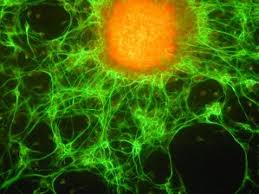Ice and Cryoablation for Kidney Tumours 
The beauty of using ice to destroy tumours is that it shows clearly on the CT scanner. This means that the interventional oncologist, when performing tumour ablation can clearly see the impact of the treatment - and guide / contain this tissue destruction only to the tumour. The good news for the patient is that surgical radical jnephrectomy is no longer necessary meaning that renal function can be preserved.
Kidney cancer expert, Dr Rowland Illing says, "The management of kidney tumours has changed dramatically over the last twenty years. Previously, any solid lump discovered in the kidney would either be repeatedly scanned and monitored or removed with the entire kidney – a ‘radical nephrectomy’."
All this is now changing. As a result of improved imaging, previously undetected small renal tumours are now being routinely discovered, and the detection can be combined with 'real time' precision biopsy and / or ablation of the affected tissue.
Cryoablation is not the only form of tumour ablation and researchers are constantly reviewing which types of ablation work best for the different types of cancer. In his article - Image Guided Treatment of Kidney Cancer, Dr Illing says, "A recent review of the medical literature looking at these types of treatment has shown that there is less chance of local tumour recurrence with cryoablation than with RFA,"
This is reflected in the National Institute for Health and Clinical Excellence (NICE) guidelines supporting this treatment. In fact the most recent series published in the medical literature suggest that there is now little difference in long term cancer outcomes between cryoablation and minimally invasive surgery.





